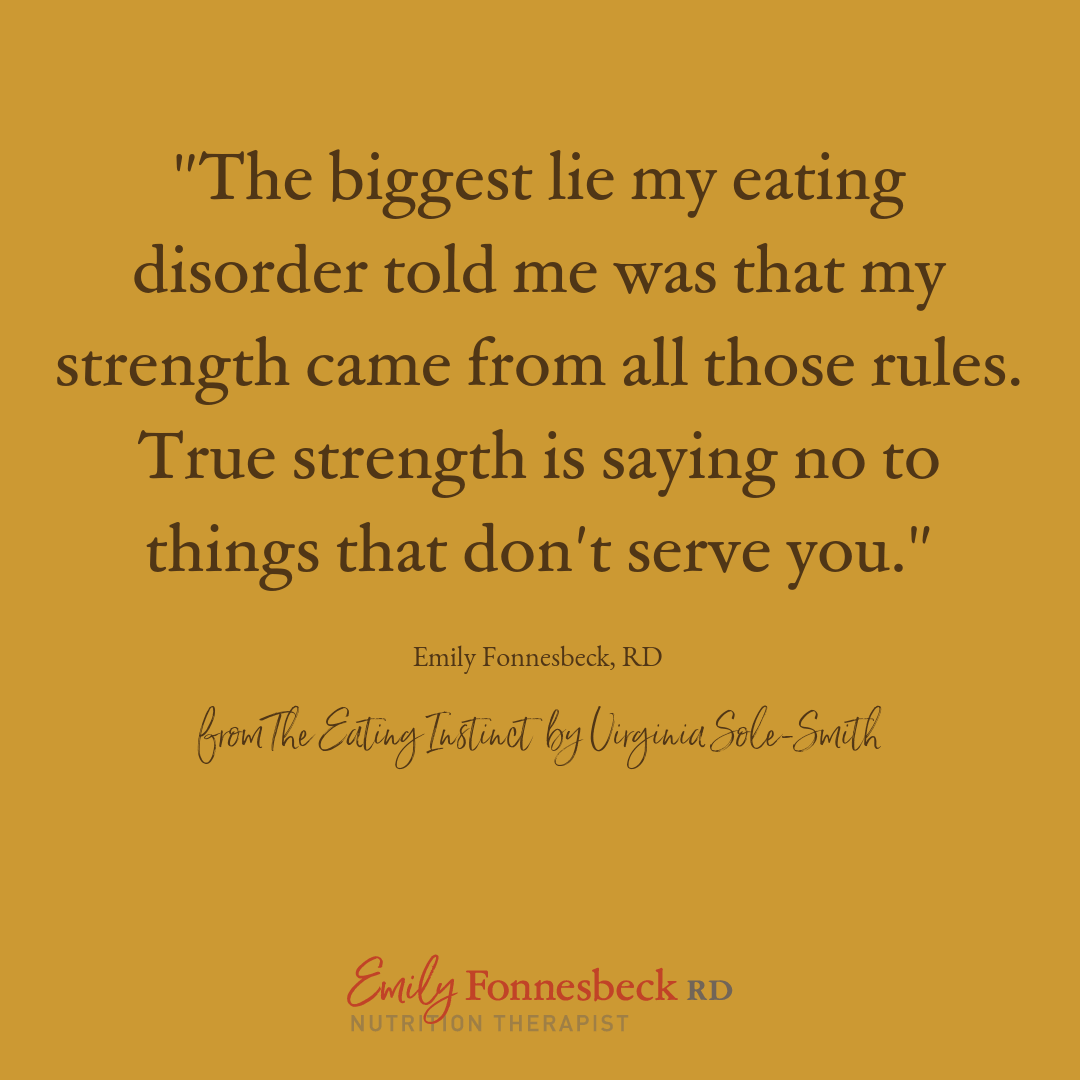Placing value on eating nutritious foods is a worthwhile endeavor. It’s definitely common to put at least some emphasis on meal planning, making healthful choices and fueling your body. But for some, healthy eating gets taken to extremes causing fixation, preoccupation and obsession.
The term orthorexia nervosa was coined by Dr. Steven Bratman in 1996 to mean an unhealthy obsession with healthy food. It is not currently recognized as a diagnosable eating disorder, however, awareness and research on this condition are on the rise.
It’s difficult to quantify how many people struggle with orthorexia since to date, no formal diagnostic criteria have been developed, nor any validated tools for diagnosis. However, that’s only because it’s relatively new — not because it isn’t a serious condition that warrants careful attention.
Warning signs
So how do you know if your concern with healthy eating has crossed a dangerous line? The National Eating Disorders Association lists warning signs to be:
- Compulsive checking of ingredient lists and nutritional labels
- An increase in concern about the health of ingredients
- Cutting out an increasing number of food groups (all sugar, all carbs, all dairy, all meat, all animal products)
- An inability to eat anything but a narrow group of foods that are deemed “healthy” or “pure”
- Unusual interest in the health of what others are eating
- Spending hours per day thinking about what food might be served at upcoming events
- Showing high levels of distress when “safe” or “healthy” foods aren’t available
- Obsessive following of food and “healthy lifestyle” blogs on Twitter and Instagram
- Body image concerns may or may not be present
Orthorexia differs from other eating disorders in that the concern tends to be more about the purity of the food rather than its effect on weight. However, symptoms do overlap with anorexia nervosa as well as obsessive-compulsive disorder.
Orthorexia also resembles symptoms and anxieties seen in somatic symptom disorder and illness anxiety disorder, including excessive fear about bodily sensations and the potential for undiagnosed illness. This preoccupation with illness is positively correlated with problematic changes in eating behaviors.
As you may assume, orthorexia occurs on a spectrum ranging from more or less severe, but not less problematic. It has the potential to negatively affect relationships, health and well-being at any point and is likely to result in malnutrition.
Those working in health-related fields, dietitians, physical therapists, athletes, trainers, doctors, etc., may be more prone to developing orthorexia given the pressure to be a “good” example. In addition, the healthy living community found on Instagram (more than any other social media outlet) shows a high prevalence of orthorexia symptoms and Instagram use is positively correlated with increased symptoms.

Treatment
Treatment for orthorexia, like any other eating disorder, is most effective when utilizing a team of professionals including a physician, therapist and dietitian. While there is no specific treatment protocol yet developed for orthorexia, eating disorder experts would most likely treat it as a combination of anorexia nervosa and obsessive-compulsive disorder. Some treatment strategies and goals would include:
- Decrease obsessive thoughts about good vs. bad foods
- Disrupt habitual patterns, rituals and routines around food
- Challenge false food beliefs while managing the anxiety that would naturally result
- Increase variety and amounts of foods eaten to improve nutritional status
- Diversify how a patient’s time is spent to include things outside of food, exercise and health
Tips to avoid unhealthy food behaviors
If you find yourself struggling with any symptoms of orthorexia, I would encourage you to seek professional help. While this isn’t intended to replace individualized treatment, I would offer a few suggestions for challenging rigid and worrisome food behaviors:
- Don’t eat the same foods over and over. Challenge yourself to eat a different meal for breakfast, lunch and dinner each day to avoid falling into ritualistic eating patterns.
- Use meal times to connect with others rather than eating by yourself. Eating disorders and their behaviors are isolating; be intentional about making food and meal times social and interactive.
- Make a list of all the things you enjoy doing. Set a goal to spend time each day doing something you find meaningful and valuable, particularly replacing time spent in researching, planning or preparing food.
- Set a boundary for researching nutrition — avoid Google, don’t read labels or track food intake.
- Detox your social media feeds from anything food and body image obsessive.
Eating disorders are serious and life-threatening. Our current nutrition culture tends to glamorize and applaud disciplined eating, but I would encourage you to assess your intentions around healthy eating and avoid the temptation to take it to extremes.
Having struggled with Orthorexia myself, I know first hand how excruciatingly difficult recovery can be. I promised myself that if I ever found a way out of it, I would dedicate the rest of my professional career to helping other people do the same. I vowed to never be part of the problem again and only part of the solution. As such, I hope this information is helpful for you. You may find the following related content helpful:
- Supporting Orthorexia Recovery
- Orthorexia and Adoption
- Food Psych podcast interview
- Elimination Diets: Are They Really Helpful?
I’d also highly recommend the book The Eating Instinct by Virginia Sole-Smith. I am honored to be included and grateful to Virginia for sharing my story.
